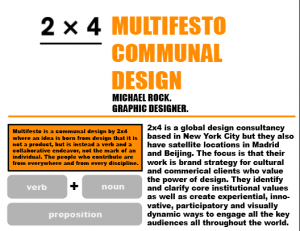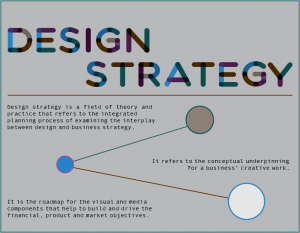The second T was assigned today and that is technology. As previously stated in an earlier blog, design strategy was my term and now I get to learn more and more about design strategy and things that correlate with it. My technology was 2×4.org as well as multifesto.2×4.org which is just a project that the 2×4 company did in New York City. 2×4 is a design agency in New York City that was founded by Michael Rock in 1994. The focus of their work is the brand strategy for cultural and commercial clients who value the power of design. Their studio is broken down into three major types of work: print, motion and interactive. They have many specialities but some of their primary ones consist of art direction, brand strategy, branding and identity, information graphics and web design. The majority of their clients in these specific areas are the fashion and arts world.
The second website that was mentioned is multifesto.2×4.org which is an idea that was born into a design that expresses the thought that design is not a product, but is instead, a verb. It does not mark an individual, but it is an endeavor. The manifesto is put together by the collection of a verb + proposition + noun. The project was displayed in New York City and the chosen three-word statements came from people from all sorts of backgrounds and ethnicities.

